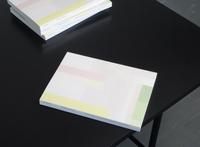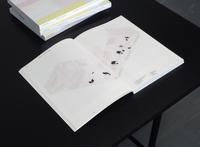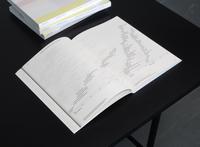Dissertations
BLIND MAPS AND BLUE DOTS
Doctoral Thesis
Issued:
23 April 2020
Promotors:
Janneke Wesseling
Lucas Evers
Gert Staal
Available at:
Leiden University Repository
Abstract
In the research project entitled ‘Blind Maps and Blue Dots: The blurring of the producer-user divide in the production of visual information’, Joost Grootens investigated what contemporary mapmaking practices can reveal about the ever-evolving field of graphic design. The shift towards digital modes of production has fundamentally changed the field of graphic design and has led to a different relationship between the producers and users of visual information. In his dissertation, Grootens argues that the evaluation of graphic design’s recent developments is too strongly focused on what happened to the persona of the graphic designer. He proposes an alternative model that focuses on the technologies that have shaped the field.
Joost Grootens considers cartography a testing ground to understand the transformations of graphic design. Three mapmaking practices of amateurs and technology companies were selected to survey, analyze and test that transformation. Grootens adopted notions from post-representational cartography, which regards a map as a process rather than a fixed spatial representation. According to this theory, a map is in a constant state of becoming: ‘producing’ and ‘using’ are not consecutive processes but parallel tracks. In his design practice, Grootens has developed strategies of incorporating ambiguity as an antidote to the misalignments in the encounters between the producer-user and the graphic product. By incorporating the ambiguity and uncertainty of data, Grootens highlights and challenges the manipulations in the design of visual information.
In the publication ‘Blind Maps and Blue Dots’ Grootens investigates the tools, strategies and output of contemporary mapmaking practices of amateurs and technology companies that have appropriated the technologies to design and publish visual information.The dissertation contains a series of visualizations that embody an alternative documentation of the research. Grootens regards the development of alternative and complementary languages as an essential aspect of artistic research. This parallel visual documentation of the research questions the discursive text, and all the prejudices and histories contained within it.
Documentation
Photos of 'Blind Maps and Blue Dots’. This publication was designed by SJG within the framework of Grootens' PhD research project.





